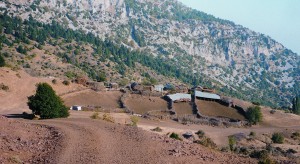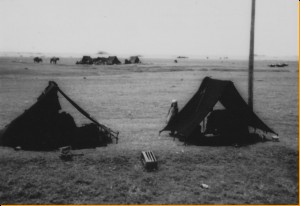Transhumance and nomadism
The Óthris mountains and the Almirós-Soúrpi plain belonged to the territory of the Hellenistic city of New Halos. The moderate altitude of the Óthris range, the short distances between the Óthris and the surrounding plains and the relatively mild winters in the plains due to the vicinity of the Pagasitic gulf, implied excellent conditions for specialized pastoralism and transhumance by (semi)nomadic Sarakatsanéi and Vlachi and villagers in the 19th and 20th centuries.
 Towns with sufficient urban populations and markets for sale of the products of specialized pastoralists are generally considered a prerequisite for specialized pastoralism. The Óthris mountains and the surrounding plains alone contained no fewer than nine towns in Hellenistic times. Many of these towns were as large as New Halos. We assume that the Óthris area flourished in the Hellenistic period.
Towns with sufficient urban populations and markets for sale of the products of specialized pastoralists are generally considered a prerequisite for specialized pastoralism. The Óthris mountains and the surrounding plains alone contained no fewer than nine towns in Hellenistic times. Many of these towns were as large as New Halos. We assume that the Óthris area flourished in the Hellenistic period.
The evidence for human interference in the Óthris mountains from the end of the second millennium BC onwards, the large number of towns in and around the Óthris range and the summer pasturing of large flocks mentioned in two literary sources make it plausible that specialized pastoralism and short-distance transhumance were practised in Hellenistic Thessaly, at least in the Óthris region.

